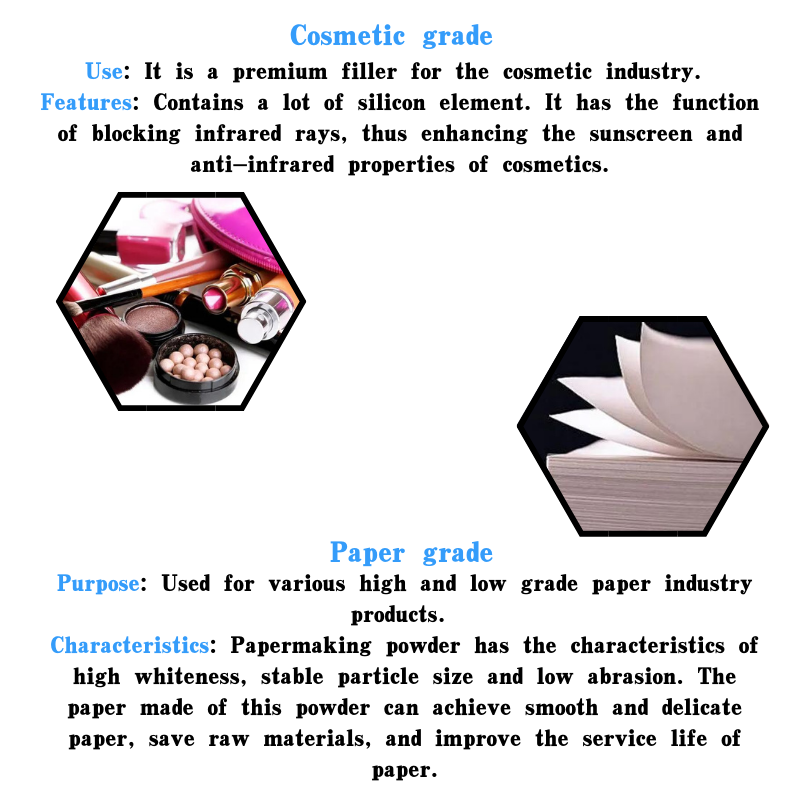
silicium carbide
The Promise and Challenges of Silicon Carbide (SiC) in Modern Technology
Silicon carbide (SiC) is emerging as a pivotal material in various technological applications, primarily due to its exceptional physical, thermal, and electronic properties. As industries strive for improved efficiency and sustainability, SiC has garnered attention for its potential to revolutionize energy systems, power electronics, and even automotive technologies. This article delves into the characteristics of silicon carbide, its applications, and the challenges that lie ahead.
Properties of Silicon Carbide
One of the most notable attributes of SiC is its wide bandgap, which measures approximately 3.0 eV, in contrast to silicon's 1.1 eV. This characteristic allows SiC devices to operate at higher voltages, temperatures, and frequencies, making them ideal for high-power applications. Furthermore, SiC exhibits remarkable thermal conductivity, which enables efficient heat dissipation, and high thermal stability, making it suitable for environments that would otherwise degrade conventional materials.
The mechanical strength of silicon carbide is another compelling advantage. It is one of the hardest known materials, which enhances the durability of devices constructed from it. As a result, SiC components tend to have a longer lifespan, thereby potentially reducing costs and improving reliability over time.
Applications of Silicon Carbide
The application of SiC spans across multiple sectors. In the realm of power electronics, SiC devices are increasingly replacing traditional silicon components. The benefits include higher efficiency, reduced switching losses, and enhanced performance in inverters and converters used in renewable energy sources, such as solar and wind power. As the world shifts towards cleaner energy alternatives, the role of SiC in making these technologies more efficient cannot be overstated.
Moreover, the automotive industry is experiencing a transformation with the introduction of SiC in electric vehicles (EVs). The shift towards electrification has driven demand for robust power systems that can handle the high currents required for EV operations. SiC-based power modules allow for more compact designs, increased operating temperature limits, and improved overall system performance. This is crucial not only for enhancing the range and efficiency of electric vehicles but also for addressing the growing demand for faster charging capabilities.
silicium carbide

Another area where silicon carbide is making strides is in the field of semiconductor technology. As 5G and future 6G technologies roll out, the need for high-frequency devices has risen sharply. SiC is poised to play a significant role in the development of devices for these advanced communication systems, offering improved performance and reduced energy losses.
Challenges and Future Prospects
Despite the promising advantages, the integration of silicon carbide into mainstream applications is not without challenges. One of the primary hurdles is the cost. The production of SiC substrates and wafers remains more expensive than traditional silicon, which can hinder adoption, especially in cost-sensitive applications. However, as manufacturing techniques continue to advance, it is expected that costs will decrease, making SiC more accessible.
Another challenge is the current state of the supply chain and manufacturing infrastructure. As the demand for SiC grows, the industry faces pressure to ramp up production capacities efficiently. Investments in new facilities and technologies will be essential to meet this rising demand and ensure sustainability.
Moreover, engineering challenges remain in optimizing SiC devices for various applications. The ongoing research and development efforts aim to address these issues, focusing on improving material quality, enhancing device performance, and developing innovative architectures that fully leverage SiC’s capabilities.
Conclusion
Silicon carbide presents a transformative potential across many technological domains, from renewable energy systems to electric vehicles and high-frequency communication devices. Its remarkable properties position it as a viable alternative to traditional silicon, offering improved efficiency and performance. However, challenges regarding cost, manufacturing, and optimization must be addressed to unlock its full potential. As the world navigates an increasingly energy-conscious future, silicon carbide stands out as a key player that could contribute significantly to advancing technology sustainably and efficiently. The ongoing evolution of SiC technology heralds a new era of innovation that holds great promise for industries worldwide.
Share
-
Premium Glass Sand Solutions | High Purity SupplyNewsAug.03,2025
-
Premium Talcum Powder Enhanced with GPT-4 Turbo | Soft & Long-LastingNewsAug.02,2025
-
Fly Ash Solutions Enhanced by GPT-4 Turbo | Sustainable InnovationNewsAug.01,2025
-
Natural Premium Bentonite Cat Litter - Superior ClumpingNewsJul.31,2025
-
Premium Resin Coated Sand - High Heat Resistance CastingNewsJul.31,2025
-
High Quality Silicon Carbide Grit for Abrasive ApplicationsNewsJul.30,2025






